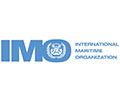World Maritime Theme 2024: “Navigating the future: safety first!”
World Maritime Theme 2024: “Navigating the future: safety first!” Hellenic Shipping News Worldwide


Maritime Safety in an Era of New Technologies and Alternative Fuels

The International Maritime Organization (IMO) has selected “Navigating the future: safety first!” as the World Maritime Theme for 2024. This theme highlights IMO’s commitment to enhancing maritime safety and security, protecting the marine environment, and ensuring regulatory development keeps pace with technological advancements and innovations.
Emphasis on Sustainable Development Goals (SDGs)
The chosen theme aligns with the Sustainable Development Goals (SDGs) set by the United Nations. It specifically addresses SDG 7 (affordable and clean energy), SDG 8 (sustainable economic growth and decent work), SDG 9 (resilient infrastructure and innovation), SDG 13 (climate action), and SDG 14 (ocean conservation).
IMO Secretary-General’s Statement
IMO Secretary-General Kitack Lim stated that this theme allows the organization to focus on the safety implications of new technologies, alternative fuels, and measures to reduce greenhouse gas emissions. The goal is to ensure the safety and efficiency of shipping while promoting smooth and efficient international trade.
Evolution of Maritime Safety Regulations
Safety has always been a priority for IMO since its establishment in 1948. The regulatory framework continually evolves to address emerging technologies and innovations. An example of this is the ongoing development of a goal-based Code for maritime autonomous surface ships (MASS Code).
50th Anniversary of SOLAS Convention
2024 marks the 50th anniversary of the adoption of the 1974 SOLAS Convention, a key IMO treaty that regulates maritime safety.
Digitalization and Automation in the Shipping Industry
Digitalization and automation are revolutionizing the shipping industry by introducing new technologies that enhance safety, security, efficiency, and sustainability. These advancements improve the overall efficacy and competitiveness of the industry, allowing for more efficient ship design, construction, operation, increased cargo capacity, cost reduction, and improved customer satisfaction.
Link between Safety and Greenhouse Gas Emissions
Shipping is responsible for about 90% of global trade and is considered the least environmentally damaging mode of transport. Enhancing ship safety and reducing greenhouse gas emissions are interconnected goals that contribute to a sustainable and efficient maritime industry. The theme “Navigating the future: safety first!” supports IMO’s ambitious GHG reduction policy, which includes assessing safety risks associated with new technologies and alternative fuels and developing regulatory measures to address and mitigate those risks.
Conclusion
The World Maritime Theme for 2024 emphasizes the importance of maritime safety in the face of new technologies and alternative fuels. It aligns with the UN’s Sustainable Development Goals and highlights IMO’s commitment to ensuring a sustainable and efficient maritime industry.
Source: IMO
SDGs, Targets, and Indicators in the Article
1. Which SDGs are addressed or connected to the issues highlighted in the article?
- SDG 7: Ensure access to affordable, reliable, sustainable, and modern energy.
- SDG 8: Promote sustained, inclusive, and sustainable economic growth, full and productive employment, and decent work for all.
- SDG 9: Build resilient infrastructure, promote inclusive and sustainable industrialization, and foster innovation.
- SDG 13: Take urgent action to combat climate change and its impacts.
- SDG 14: Conserve and sustainably use the oceans, seas, and marine resources for sustainable development.
The article mentions that the theme “Navigating the future: safety first!” is closely linked to the UN’s Sustainable Development Goals (SDGs), specifically SDGs 7, 8, 9, 13, and 14.
2. What specific targets under those SDGs can be identified based on the article’s content?
- SDG 7.2: Increase substantially the share of renewable energy in the global energy mix.
- SDG 8.4: Improve progressively, through 2030, global resource efficiency in consumption and production and endeavor to decouple economic growth from environmental degradation.
- SDG 9.4: Upgrade infrastructure and retrofit industries to make them sustainable, with increased resource-use efficiency and greater adoption of clean and environmentally sound technologies and industrial processes.
- SDG 13.3: Improve education, awareness-raising, and human and institutional capacity on climate change mitigation, adaptation, impact reduction, and early warning.
- SDG 14.2: Sustainably manage and protect marine and coastal ecosystems to avoid significant adverse impacts, including by strengthening their resilience and take action for their restoration to achieve healthy and productive oceans.
Based on the article’s content, these specific targets can be identified under the mentioned SDGs.
3. Are there any indicators mentioned or implied in the article that can be used to measure progress towards the identified targets?
- Indicator for SDG 7.2: Proportion of total final energy consumption derived from renewable sources.
- Indicator for SDG 8.4: Material footprint, material footprint per capita, and material footprint per GDP.
- Indicator for SDG 9.4: CO2 emissions per unit of value added.
- Indicator for SDG 13.3: Number of countries that have communicated the strengthening of institutional, systemic, and individual capacity-building to implement adaptation, mitigation, and technology transfer.
- Indicator for SDG 14.2: Percentage of marine areas protected.
The article does not explicitly mention indicators, but these indicators can be used to measure progress towards the identified targets based on the content.
SDGs, Targets, and Indicators Table
| SDGs | Targets | Indicators |
|---|---|---|
| SDG 7: Ensure access to affordable, reliable, sustainable, and modern energy. | Target 7.2: Increase substantially the share of renewable energy in the global energy mix. | Proportion of total final energy consumption derived from renewable sources. |
| SDG 8: Promote sustained, inclusive, and sustainable economic growth, full and productive employment, and decent work for all. | Target 8.4: Improve progressively, through 2030, global resource efficiency in consumption and production and endeavor to decouple economic growth from environmental degradation. | Material footprint, material footprint per capita, and material footprint per GDP. |
| SDG 9: Build resilient infrastructure, promote inclusive and sustainable industrialization, and foster innovation. | Target 9.4: Upgrade infrastructure and retrofit industries to make them sustainable, with increased resource-use efficiency and greater adoption of clean and environmentally sound technologies and industrial processes. | CO2 emissions per unit of value added. |
| SDG 13: Take urgent action to combat climate change and its impacts. | Target 13.3: Improve education, awareness-raising, and human and institutional capacity on climate change mitigation, adaptation, impact reduction, and early warning. | Number of countries that have communicated the strengthening of institutional, systemic, and individual capacity-building to implement adaptation, mitigation, and technology transfer. |
| SDG 14: Conserve and sustainably use the oceans, seas, and marine resources for sustainable development. | Target 14.2: Sustainably manage and protect marine and coastal ecosystems to avoid significant adverse impacts, including by strengthening their resilience and take action for their restoration to achieve healthy and productive oceans. | Percentage of marine areas protected. |
Behold! This splendid article springs forth from the wellspring of knowledge, shaped by a wondrous proprietary AI technology that delved into a vast ocean of data, illuminating the path towards the Sustainable Development Goals. Remember that all rights are reserved by SDG Investors LLC, empowering us to champion progress together.
Source: hellenicshippingnews.com

Join us, as fellow seekers of change, on a transformative journey at https://sdgtalks.ai/welcome, where you can become a member and actively contribute to shaping a brighter future.







